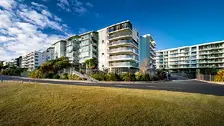Rental Yield Explained: What's a Good Yield in the NZ Market?
 By
Trent Bradley
·
14 minute read
By
Trent Bradley
·
14 minute read

Rental yield represents one of the most commonly cited metrics in property investment, yet it's also one of the most misunderstood. Investors frequently make decisions based on headline gross yields without understanding what these numbers actually mean, how they're calculated, or what constitutes "good" yields in different New Zealand markets and contexts.
Table of Contents
- What Is Rental Yield?
- Gross Yield vs Net Yield
- Factors That Influence Rental Yield
- What's a Good Yield in New Zealand Markets?
- Beyond Yield: Other Critical Metrics
- Common Yield Misconceptions and Mistakes
- Using Yield Effectively in Investment Decisions
- The Luminate Financial Group Perspective
- Frequently Asked Questions
Key Takeaways
- Gross yield (annual rental income ÷ property value × 100) ignores all ownership costs while net yield accounts for expenses—a property with 4.77% gross yield might deliver only 1.93% net yield after accounting for rates, insurance, property management, and maintenance
- Auckland typically delivers 3-4.5% gross yields (1.5-2.5% net), regional cities 4.5-5.5% gross (2.5-3.5% net), and provincial towns 6-8% gross (3-4.5% net), reflecting fundamental trade-off between capital growth and income generation
- $600,000 property generating $28,600 annual rent shows 4.77% gross yield, but after $17,030 annual expenses (rates, insurance, property management, maintenance) delivers only 1.93% net yield—a 2.84 percentage point gap representing ownership cost reality
- Cash-on-cash return measures actual cash flow as percentage of invested capital accounting for financing—properties can show reasonable yield but negative cash-on-cash returns revealing subsidies required
- Total return combines rental yield + capital appreciation showing comprehensive performance—2.5% net yield + 6% appreciation = 8.5% total return demonstrating modest-yield properties can deliver strong returns through growth
- Properties offering highest yields often carry highest risks—declining areas, problem properties, challenging tenant demographics, or limited growth potential requiring assessment of why yields are high and whether risks are acceptable
- Always calculate net yields using conservative rent estimates (actual achievable, not aspirational), comprehensive expense projections (all ownership costs), and realistic vacancy assumptions (50 weeks not 52)
At Luminate Financial Group, we regularly encounter investors who've purchased properties based on impressive-sounding gross yields only to discover that actual cash flow performance falls far short of expectations once all costs are properly accounted for. Conversely, some investors dismiss excellent opportunities because gross yields appear modest without understanding that those yields may be entirely appropriate for the location and property type.
Understanding rental yield thoroughly – what it measures, how to calculate it properly, what influences it, and what constitutes reasonable expectations across different New Zealand markets – is essential for making sound investment decisions and accurately assessing property performance.
Let's demystify rental yield comprehensively so you can use this metric effectively in your property investment strategy.
What Is Rental Yield?
Rental yield measures the annual rental income generated by a property expressed as a percentage of the property's value or purchase price. It provides a standardized way to compare income-generating potential across different properties regardless of their absolute prices.
The Basic Concept
A property worth $500,000 generating $25,000 annual rent produces a 5% yield. A property worth $1,000,000 generating $40,000 annual rent produces a 4% yield. Despite the second property generating more absolute income, the first property delivers superior yield – more income relative to capital invested.
Yield enables comparing properties objectively. A $400,000 property and a $900,000 property can't be compared by absolute rental income alone, but their yields (income as percentage of value) provide meaningful comparison.
Why Yield Matters
Yield indicates how efficiently your invested capital generates income. Higher yields mean better income returns relative to capital deployed. For investors prioritizing cash flow, yield is often the most important initial metric.
Yield also helps assess cash flow potential. While yield alone doesn't determine cash flow (mortgage costs and expenses matter critically), properties with gross yields below 4% will almost certainly require cash flow subsidies, while properties above 6% might approach neutral or positive cash flow with appropriate financing.
Gross Yield vs Net Yield
The distinction between gross and net yield is crucial yet frequently overlooked. These two metrics tell very different stories about property performance.
Gross Rental Yield
Gross yield represents rental income as a percentage of property value without accounting for any expenses whatsoever.
Formula: Gross Yield = (Annual Rental Income ÷ Property Value) × 100
Example:
- Property value: $600,000
- Weekly rent: $550
- Annual rent: $28,600 (52 weeks)
- Gross yield: ($28,600 ÷ $600,000) × 100 = 4.77%
Gross yield is simple to calculate and widely advertised, making it the most commonly cited yield metric. However, it's fundamentally misleading because it ignores all ownership costs.
Net Rental Yield
Net yield accounts for property operating expenses before mortgage costs, providing a more accurate picture of actual income generation.
Formula: Net Yield = ((Annual Rental Income - Annual Expenses) ÷ Property Value) × 100
Example (same property):
Annual rental income: $28,600
Annual expenses:
- Council rates: $3,000
- Insurance: $1,800
- Property management (8% + GST): $2,430
- Maintenance (1.5% of value): $9,000
- Other costs: $800
- Total expenses: $17,030
Net annual income: $11,570 Net yield: ($11,570 ÷ $600,000) × 100 = 1.93%
Notice the dramatic difference: 4.77% gross yield versus 1.93% net yield. This 2.84 percentage point gap represents the reality of property ownership costs that gross yield completely ignores.
Why the Distinction Matters Critically
Investors making decisions based solely on gross yields dramatically overestimate actual returns. A property advertised with a seemingly attractive 5% gross yield might deliver only 2% net yield after expenses – a completely different investment proposition.
Always calculate net yields when evaluating properties. Gross yields provide rough comparisons but never tell the complete story. Two properties with identical 4.5% gross yields might show net yields of 1.8% and 2.6% respectively due to different expense profiles.
Factors That Influence Rental Yield
Understanding what drives yield variations helps explain why yields differ dramatically across locations and property types.
Location and Market Dynamics
Major Metropolitan Centers: Auckland, Wellington, and Christchurch typically deliver the lowest gross yields in New Zealand, often 3-4.5%, due to high property values relative to rents.
Regional Cities: Hamilton, Tauranga, Palmerston North, and similar centers typically yield 4.5-5.5% gross, offering middle ground between major cities and provincial towns.
Provincial Towns: Smaller centers like Invercargill, Whanganui, Timaru often deliver 6-8% gross yields due to low property values relative to rents.
This yield gradient reflects the fundamental trade-off between capital growth and income generation. Locations with highest yields typically show most modest growth, while locations with strongest growth show lowest yields.
Property Type Variations
Apartments and Units: Typically deliver higher gross yields than houses in the same locations due to lower purchase prices relative to rents. However, body corporate fees significantly reduce net yields.
Townhouses: Generally fall between apartments and houses on yield spectrum, offering moderate yields with fewer complications than apartments.
Houses: Usually deliver lowest gross yields in any given market but often show strongest capital growth and simplest ownership structures.
Property Size: Smaller properties (one or two-bedroom) often deliver higher yields than larger properties (four-bedroom houses) because rents don't scale proportionally with property values.
Property Age and Condition
New or Recently Renovated: Modern properties may command rental premiums improving yields, though they also typically carry purchase price premiums that can offset this advantage.
Older Properties: Well-maintained older properties sometimes offer yield sweet spots – lower purchase prices than new properties while still achieving reasonable rents. However, deferred maintenance can decimate actual yields through repair costs.
Dated Properties: Properties requiring updates often show high gross yields due to suppressed purchase prices but face high maintenance costs reducing net yields substantially.
Supply and Demand Dynamics
Tight Rental Markets: Areas with low vacancy rates and strong tenant demand support higher rents relative to property values, improving yields.
Oversupplied Markets: Areas with abundant rental stock and limited tenant demand face rental price pressure, suppressing yields.
Seasonal Variations: Some markets (tourist areas, university towns) experience seasonal rental fluctuations affecting annual yield calculations.
What's a Good Yield in New Zealand Markets?
The question "what's a good yield?" has no universal answer – it depends entirely on location, property type, and your investment strategy. However, general benchmarks exist for different market segments.
Auckland Yield Benchmarks
Central City Apartments: 3-4% gross yield typical Established Suburban Houses: 3-4.5% gross yield typical Outer Suburban Properties: 4-5% gross yield possible
Assessment: Auckland yields are New Zealand's lowest due to high property values. Gross yields below 3.5% in Auckland should raise questions about whether pricing is too high. Yields above 4.5% in Auckland are relatively attractive for the market, though still requiring substantial cash flow subsidies.
Net yields in Auckland typically fall to 1.5-2.5% after expenses.
Wellington Yield Benchmarks
Central City Apartments: 3.5-4.5% gross yield typical Suburban Houses: 4-5% gross yield typical Outer Suburbs: 4.5-5.5% gross yield possible
Assessment: Wellington yields slightly exceed Auckland due to lower property values relative to rents. Yields in the 4-5% range are reasonable for Wellington established suburbs. Yields below 4% suggest potential overpricing.
Net yields typically reach 2-3% after expenses.
Christchurch Yield Benchmarks
Central City: 4-5% gross yield typical Established Suburbs: 4.5-5.5% gross yield typical Outer Areas: 5-6% gross yield possible
Assessment: Christchurch offers better yields than Auckland or Wellington, reflecting more affordable property prices. Yields of 4.5-5.5% are typical for established areas. Yields below 4.5% warrant careful evaluation of pricing.
Net yields typically reach 2.5-3.5% after expenses.
Regional Cities Yield Benchmarks
Hamilton, Tauranga, Dunedin: 4.5-5.5% gross yield typical Palmerston North, Rotorua, New Plymouth: 5-6.5% gross yield typical Invercargill, Whanganui, Timaru: 6-7.5% gross yield typical
Assessment: Regional cities offer progressively better yields as market size and property values decrease. Yields of 5-6% are reasonable in mid-tier regional centers. Yields approaching 7%+ signal either excellent value or significant location/property challenges.
Net yields in regional centers typically range 3-4.5% after expenses.
What "Good" Means for Different Strategies
Capital Growth Strategy: If prioritizing long-term appreciation in major centers, yields of 3.5-4.5% gross (1.5-2.5% net) are acceptable and normal. You're accepting yield sacrifice for growth potential.
Balanced Strategy: Targeting moderate growth with reasonable income, yields of 4.5-5.5% gross (2.5-3.5% net) represent good balance between immediate income and appreciation prospects.
Cash Flow Strategy: Prioritizing income over growth, yields of 6%+ gross (4%+ net) are desirable and potentially necessary for positive cash flow, though these typically correlate with limited growth markets.
"Good" yield depends entirely on your strategy and goals. A 3.8% gross yield property in central Auckland might be excellent for growth-focused investors but inappropriate for cash-flow-focused investors.
Beyond Yield: Other Critical Metrics
While yield matters, it shouldn't be your only consideration when evaluating properties. Several related metrics provide more complete pictures of investment potential.
Cash-on-Cash Return
Cash-on-cash return measures actual cash flow as a percentage of invested capital (deposit plus costs), accounting for financing.
Formula: Cash-on-Cash Return = (Annual Net Cash Flow ÷ Total Cash Invested) × 100
This metric reveals whether properties actually generate positive returns on your invested capital after all costs including mortgage payments.
Example:
- Property value: $550,000
- Total invested: $225,000 (deposit plus costs)
- Annual net income after expenses: $15,000
- Annual mortgage payment: $22,000
- Net cash flow: -$7,000
- Cash-on-cash return: (-$7,000 ÷ $225,000) × 100 = -3.1%
This property shows negative returns on invested capital despite potentially reasonable yield, revealing cash flow subsidies required.
Total Return
Total return combines rental yield and capital appreciation to show comprehensive investment performance.
Formula: Total Return = Rental Yield + Capital Growth Rate
Example:
- Net rental yield: 2.5%
- Annual capital appreciation: 6%
- Total return: 8.5%
This metric demonstrates that properties with modest yields can deliver strong total returns through appreciation, while high-yield properties with minimal growth may show unimpressive total returns.
Return on Equity (ROE)
ROE measures returns relative to your current equity position rather than original investment, helping assess whether equity should remain in properties or be redeployed.
This becomes relevant as properties mature and equity accumulates. Properties showing low ROE might be candidates for sale, with proceeds funding purchases offering higher returns.
Common Yield Misconceptions and Mistakes
Several frequent errors undermine investors' understanding and use of yield metrics.
Mistake 1: Believing Marketing Yield Claims
Marketing materials often cite optimistic gross yields based on top-end rent estimates and minimum expense assumptions. Always independently verify:
- Actual achievable rents through comparable listings and property manager consultations
- Realistic expense calculations including all costs
- Whether yields account for vacancy (52-week calculations are overly optimistic)
Mistake 2: Ignoring Net Yield
Making investment decisions based purely on gross yields without calculating net yields after expenses leads to significant disappointment when actual cash flow proves far worse than anticipated.
Always calculate net yields accounting comprehensively for all operating expenses before making decisions.
Mistake 3: Comparing Yields Across Different Property Types Without Context
Comparing a 6% gross yield apartment to a 4% gross yield house without recognizing that apartments have body corporate fees substantially reducing net yields creates false comparisons.
Similarly, comparing provincial town yields to Auckland yields without recognizing dramatically different capital growth prospects leads to poor decisions.
Mistake 4: Chasing Maximum Yield Without Risk Assessment
Properties offering the highest yields often carry highest risks – declining areas, problem properties, challenging tenant demographics, or limited capital growth potential.
The highest yield isn't automatically the best investment. Assess why yields are high and whether accompanying risks are acceptable.
Mistake 5: Assuming Yields Are Static
Yields change over time as property values fluctuate and rents adjust. A property purchased at 5% yield might show 4.2% yield after two years of value appreciation if rents haven't kept pace, or might show 5.8% yield if property values declined.
Monitor yields over time rather than assuming initial purchase yields remain constant.
Using Yield Effectively in Investment Decisions
Yield serves as one tool among many for evaluating investment properties. Use it effectively by:
Setting Minimum Yield Thresholds
Establish minimum acceptable yields for your strategy and location. For example:
- "I require minimum 4% gross yield in Auckland"
- "I target 5.5%+ gross yield in regional investments"
- "I need 2.5%+ net yield to maintain acceptable cash flow"
These thresholds filter opportunities quickly, eliminating properties that can't meet your criteria.
Comparing Yields to Market Benchmarks
Assess whether property yields align with location and property type norms. Properties showing significantly lower yields than market benchmarks may be overpriced. Properties showing significantly higher yields warrant investigation into why – potentially identifying opportunities or red flags.
Calculating Yields Accurately
Always calculate both gross and net yields using:
- Conservative rent estimates (actual achievable rents, not aspirational)
- Comprehensive expense projections (including all ownership costs)
- Realistic vacancy assumptions (50 weeks rather than 52)
Conservative calculations prevent nasty surprises and enable making decisions on solid foundations.
Balancing Yield Against Growth Potential
Recognize the yield-growth trade-off. Decide whether you're prioritizing:
- Lower yields with higher growth (wealth building strategy)
- Higher yields with lower growth (income generation strategy)
- Balanced yields and moderate growth (middle-ground approach)
Your choice determines which properties and locations suit your strategy best.
Monitoring Yield Changes Over Time
Track how your properties' yields evolve as values change and rents adjust. Declining yields might signal overheating markets or rent growth lagging value appreciation. Improving yields might indicate excellent rent growth or value stagnation.
The Luminate Financial Group Perspective
At Luminate Financial Group, we emphasize that yield is an important metric but never the only consideration when evaluating properties. We help clients understand realistic yield expectations for different markets and property types, calculate yields accurately accounting for all costs, balance yield priorities against capital growth objectives, and use yield as one factor among many in comprehensive investment analysis.
We observe that investors often overemphasize yield initially, chasing headline gross yield numbers without understanding what they actually mean or calculating net yields accurately. Through education, we help clients develop more sophisticated understanding of how yield fits within comprehensive investment evaluation.
What constitutes a "good" yield is entirely context-dependent. A 3.8% gross yield in central Auckland represents reasonable performance for that market. The same 3.8% gross yield in Palmerston North would indicate overpricing or problematic property characteristics. Judge yields against appropriate benchmarks rather than universal standards.
Similarly, good yields for capital growth strategies differ dramatically from good yields for income strategies. Align yield expectations with your actual investment goals rather than pursuing maximum yields regardless of strategy.
Understanding rental yield thoroughly – how it's calculated, what influences it, what's reasonable for different markets, and how it fits within broader investment analysis – enables making informed decisions and accurately assessing property performance. Use yield as a valuable screening tool and performance metric, but always within the context of comprehensive analysis considering growth potential, location quality, property characteristics, and your personal investment objectives.
Yield matters, but it matters most when properly understood, accurately calculated, and appropriately contextualized within your complete investment strategy. Master these aspects and yield becomes a powerful tool for property investment success rather than a misleading metric that drives poor decisions.
Frequently Asked Questions
What's the difference between gross yield and net yield?
Gross yield represents rental income as percentage of property value without accounting for any expenses: (Annual Rental Income ÷ Property Value) × 100. Net yield accounts for property operating expenses before mortgage costs: ((Annual Rental Income - Annual Expenses) ÷ Property Value) × 100. For a $600,000 property generating $28,600 annual rent, gross yield is 4.77%. After expenses including $3,000 rates, $1,800 insurance, $2,430 property management, $9,000 maintenance, and $800 other costs totaling $17,030, net annual income is $11,570 delivering 1.93% net yield. This 2.84 percentage point gap represents ownership cost reality that gross yield completely ignores. Marketing materials typically cite gross yields appearing attractive but ignoring expenses. Always calculate net yields when evaluating properties—two properties with identical 4.5% gross yields might show net yields of 1.8% and 2.6% due to different expense profiles.
What rental yields should I expect in different New Zealand markets?
Auckland typically delivers lowest yields: 3-4% gross (1.5-2.5% net) for established suburban houses, 3-4.5% in outer suburbs due to high property values. Wellington yields slightly exceed Auckland: 4-5% gross (2-3% net) for suburban houses reflecting lower property values relative to rents. Christchurch offers better yields: 4.5-5.5% gross (2.5-3.5% net) for established suburbs due to more affordable pricing. Regional cities deliver progressively better yields: Hamilton/Tauranga 4.5-5.5% gross, Palmerston North 5-6.5% gross, Invercargill/Whanganui 6-7.5% gross (3-4.5% net) as market size and property values decrease. This yield gradient reflects fundamental trade-off—locations with highest yields typically show most modest capital growth, while locations with strongest growth show lowest yields. "Good" yield depends on strategy: 3.5-4.5% gross acceptable for capital growth strategies in major centers, 6%+ gross desirable for cash flow strategies prioritizing income over growth.
How do I calculate rental yield accurately?
Calculate both gross and net yields using conservative assumptions. Gross yield: (Annual Rental Income ÷ Property Value) × 100. Use actual achievable rents from comparable listings and property manager consultations, not aspirational estimates. Calculate for 50 weeks not 52 accounting for realistic vacancy. Net yield: ((Annual Rental Income - Annual Expenses) ÷ Property Value) × 100. Include comprehensive expenses: council rates, insurance (building and contents), property management (typically 8% + GST), maintenance (budget 1-2% of property value annually), body corporate fees for apartments/townhouses, and other costs (inspections, accounting, minor repairs). For $600,000 property renting $550 weekly: annual rent $28,600 (52 weeks), minus $17,030 expenses equals $11,570 net income delivering 1.93% net yield versus 4.77% gross. Conservative calculations prevent nasty surprises and enable decisions on solid foundations.
What is cash-on-cash return and why does it matter?
Cash-on-cash return measures actual cash flow as percentage of invested capital (deposit plus costs) accounting for financing, revealing whether properties actually generate positive returns after all costs including mortgage payments: (Annual Net Cash Flow ÷ Total Cash Invested) × 100. For $550,000 property with $225,000 invested generating $15,000 annual net income after expenses but requiring $22,000 annual mortgage payment, net cash flow is -$7,000 creating -3.1% cash-on-cash return. This property shows negative returns on invested capital despite potentially reasonable yield, revealing cash flow subsidies required. Cash-on-cash return provides more complete picture than yield alone because it accounts for financing costs—the actual major expense determining whether properties are self-sustaining or require ongoing subsidies. Properties showing negative cash-on-cash returns require stable income to subsidize, while positive returns generate passive income.
Why do high-yield properties often have lower capital growth?
High yields typically correlate with locations or properties having limited capital growth potential—reflecting risk-return trade-off fundamental to property investment. Provincial towns delivering 6-8% gross yields have modest population growth, limited employment diversity, or economic challenges constraining property value appreciation (typically 3-4% annually). Major centers delivering 3-4.5% gross yields have strong population growth, diverse economies, and supply constraints driving superior appreciation (typically 6-8% annually). Total return (rental yield + capital appreciation) often equalizes: high-yield/low-growth property might deliver 6% yield + 3% growth = 9% total return, while low-yield/high-growth property delivers 3% yield + 7% growth = 10% total return. Investors prioritizing wealth building accept lower yields for superior growth in major centers. Investors prioritizing income accept limited growth for better immediate cash flow in regional areas. Understanding this trade-off prevents chasing maximum yields without recognizing accompanying growth limitations.
What expenses should I include when calculating net yield?
Comprehensive expense calculation includes council rates (varies by location, typically $2,000-$4,000+ annually for investment properties), insurance covering building and contents (varies by location and property characteristics, typically $1,500-$3,000+ annually), property management fees (typically 8% of rent plus GST—for $550 weekly rent approximately $2,430 annually), maintenance and repairs (budget 1-2% of property value annually—$6,000-$12,000 for $600,000 property, varies by property age and condition), body corporate fees for apartments and townhouses (typically $3,000-$8,000+ annually depending on building amenities), and other costs including regular inspections, accounting fees, and minor repairs (typically $500-$1,500 annually). Total expenses typically consume 35-50% of gross rental income in well-maintained properties, more in older properties or those with high body corporate fees. Apartments often show highest expense ratios due to body corporate fees. Houses typically have lower expense ratios but full maintenance responsibility.
Should I focus on yield or capital growth in my investment strategy?
Strategy depends on your financial capacity, goals, and life stage. Capital growth strategy (prioritizing long-term appreciation in major centers) accepts yields of 3.5-4.5% gross (1.5-2.5% net) requiring substantial cash flow subsidies but building wealth through appreciation—suits younger investors with high stable income, long horizons (15-20+ years), and capacity to subsidize negative cash flow. Cash flow strategy (prioritizing income over growth) targets yields of 6%+ gross (4%+ net) in regional areas approaching neutral or positive cash flow—suits pre-retirement investors, those with variable income requiring sustainability, or investors seeking passive income. Balanced strategy targets moderate growth with reasonable income through yields of 4.5-5.5% gross (2.5-3.5% net)—suits mid-career investors wanting both growth and manageable cash flow. Most investors benefit from evolving strategy: starting growth-focused building equity, transitioning toward income as financial independence approaches. "Good" yield is entirely context-dependent based on your specific circumstances and objectives.
What common mistakes do investors make with rental yield?
Critical mistakes include believing marketing yield claims without independently verifying actual achievable rents, realistic expense calculations, and whether yields account for vacancy (52-week calculations are optimistic), making decisions based purely on gross yields without calculating net yields after expenses leading to surprise when actual cash flow proves far worse, comparing yields across different property types without context (6% gross yield apartment versus 4% gross yield house ignoring body corporate fees substantially reducing apartment net yields), chasing maximum yield without risk assessment (highest yields often carry highest risks—declining areas, problem properties, challenging demographics, limited growth), assuming yields are static (yields change as property values fluctuate and rents adjust—monitor over time), and focusing exclusively on yield ignoring capital growth potential, location quality, tenant demographics, property condition, and management requirements. Use yield as valuable screening tool and performance metric within comprehensive analysis considering all investment factors aligned with your strategy and goals.

Trent Bradley
Trent Bradley is a New Zealand financial advisor specializing in property-backed finance and investment consulting. With over 26 years of experience running his mortgage broking business, he has helped wholesale investors access high-yield property-backed loan opportunities. For the past 12 years, Trent has led Luminate Finance, a New Zealand finance company dedicated to connecting investors with secure property investment solutions.








































